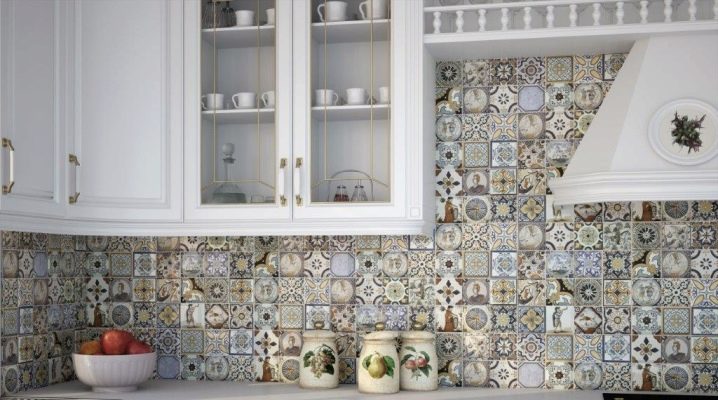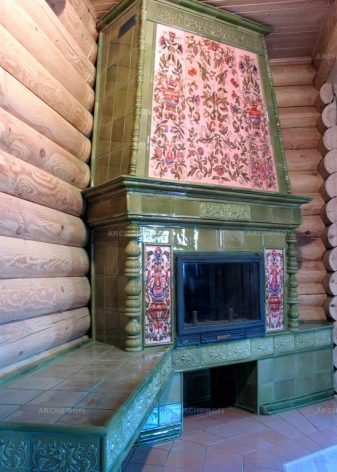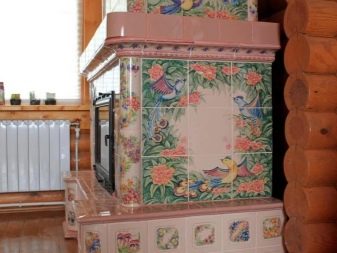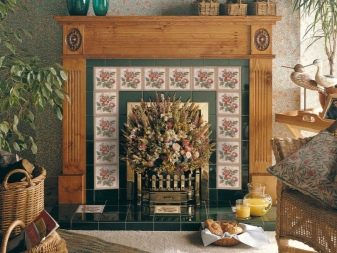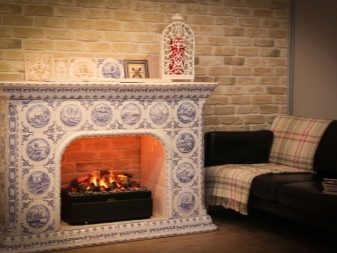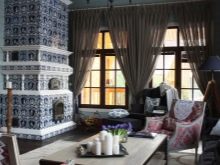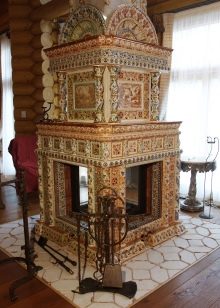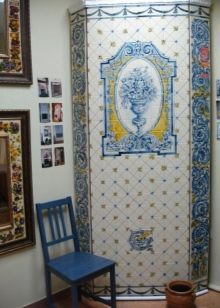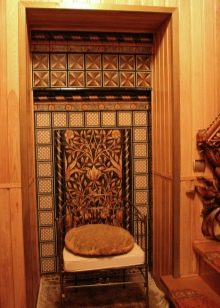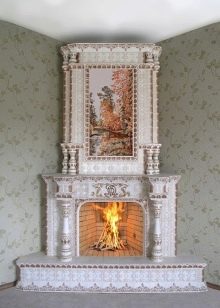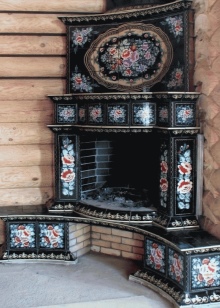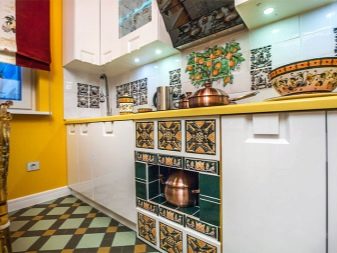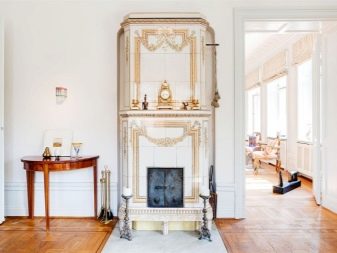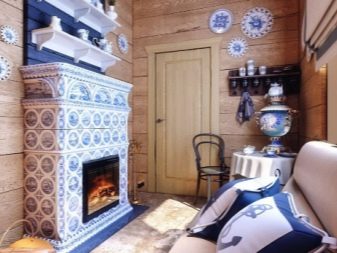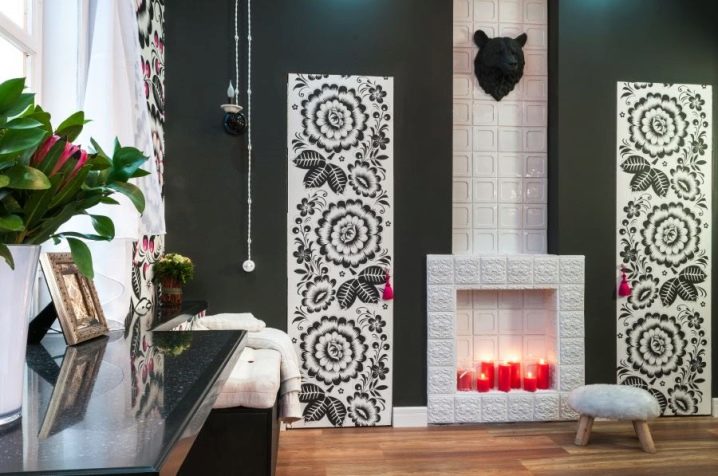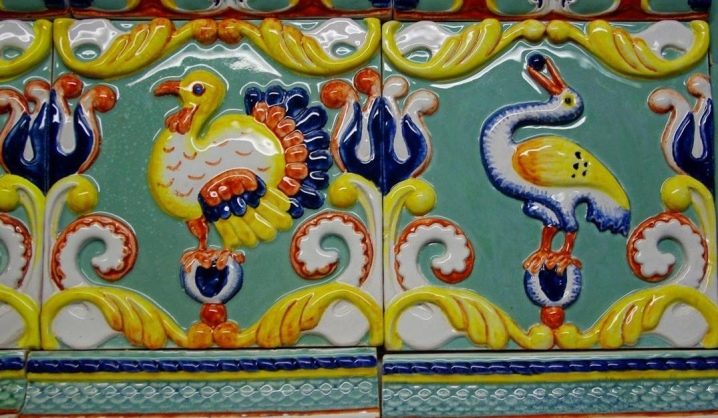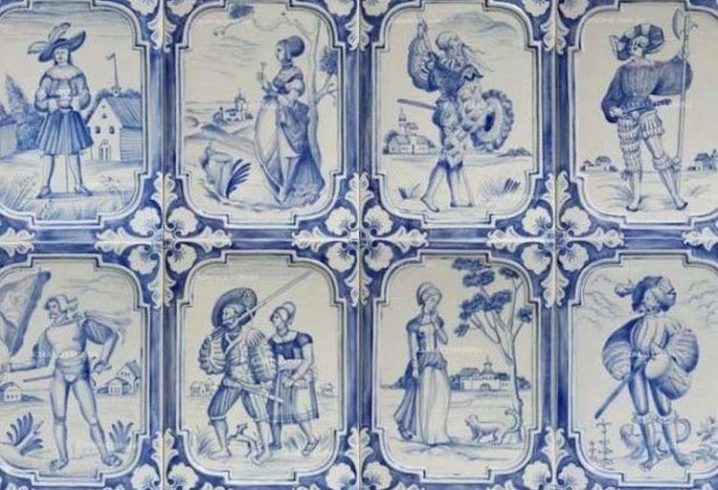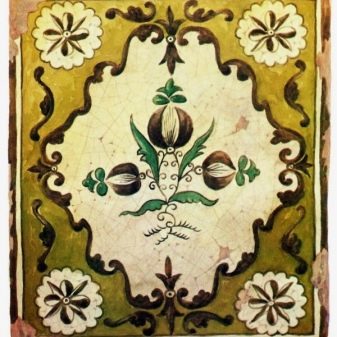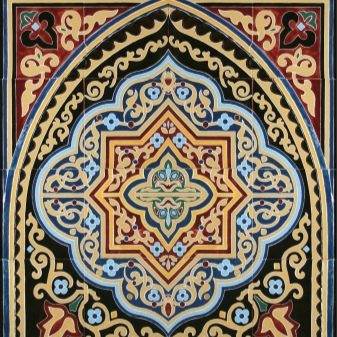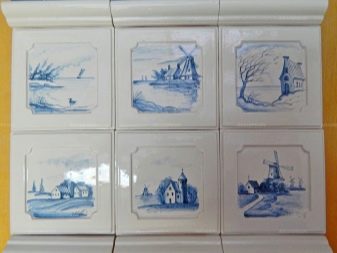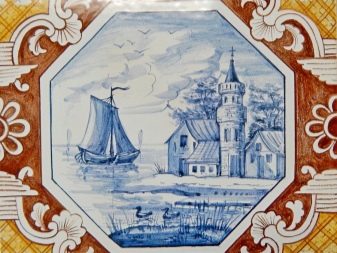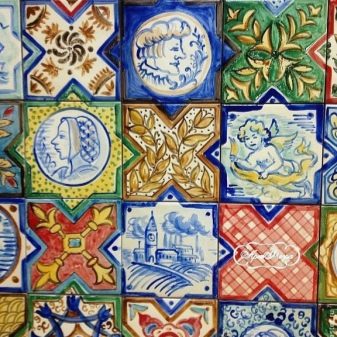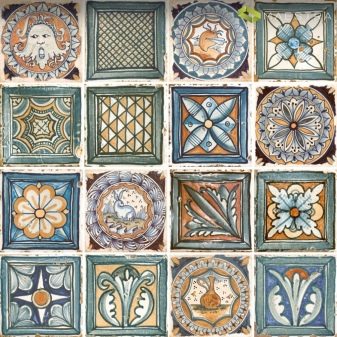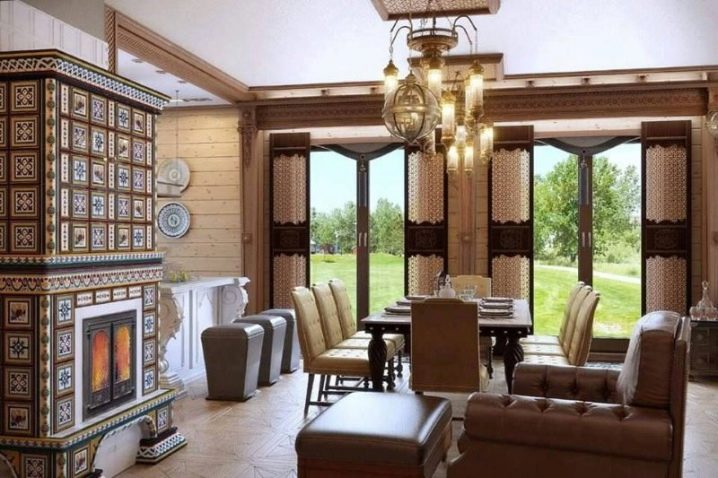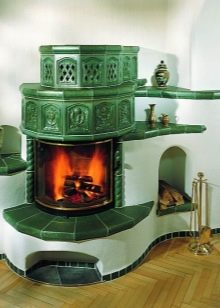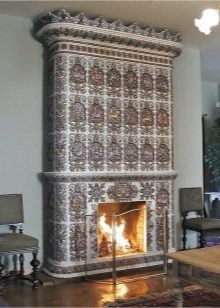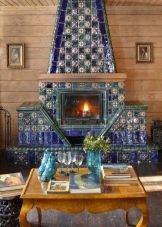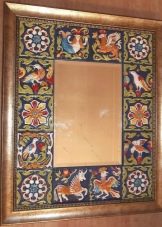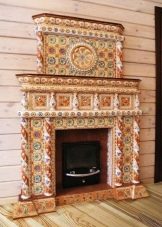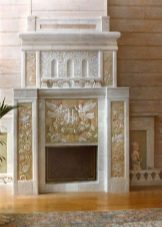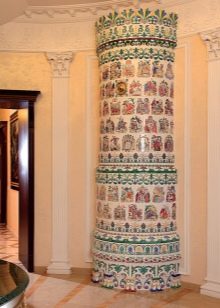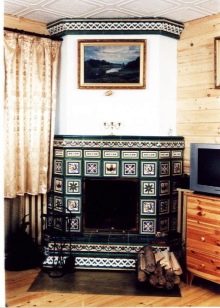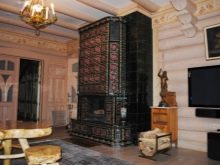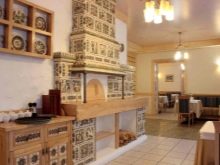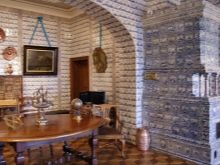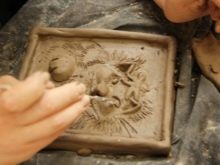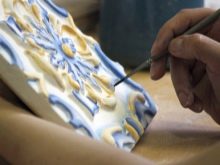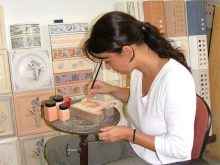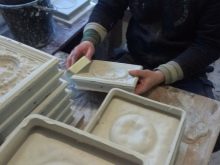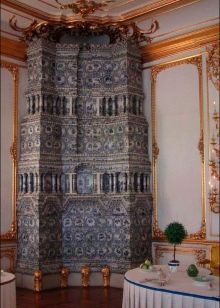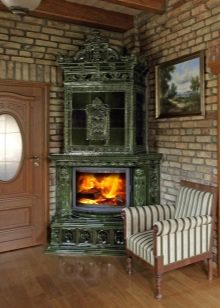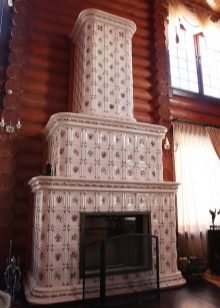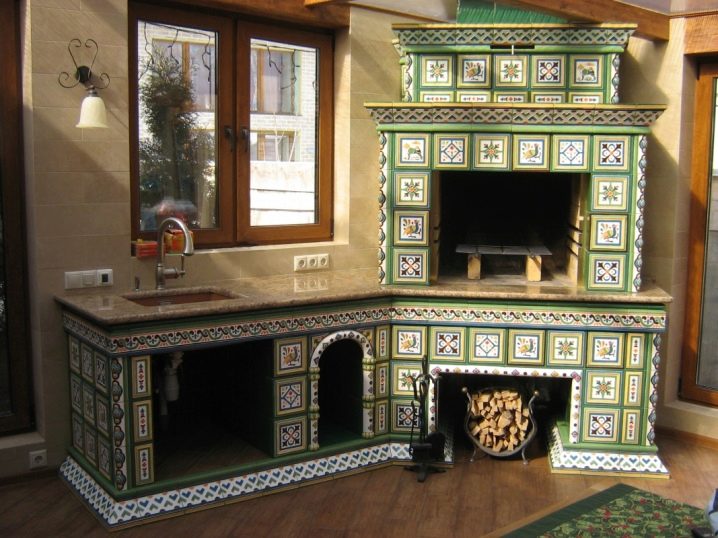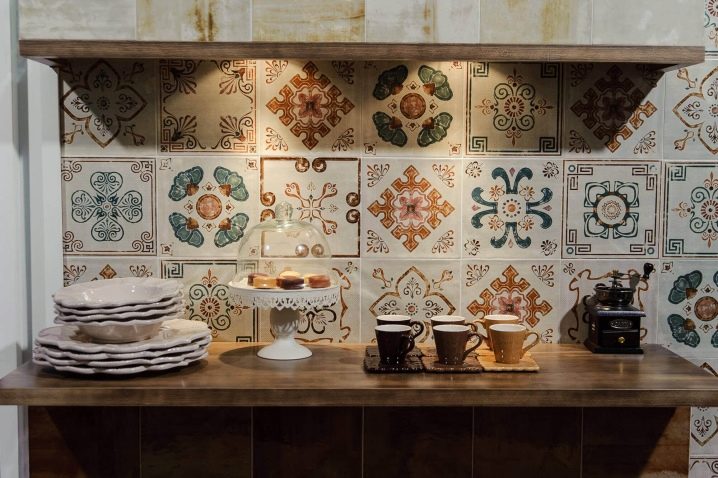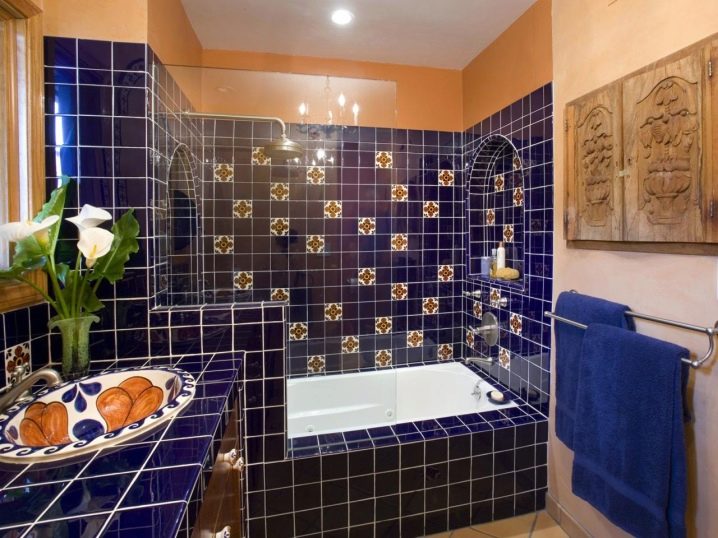What are tiles and what types are they?
Tiles are a popular traditional decoration, they are often used in modern types of interior. Bright ceramic elements look especially appropriate when decorating fireplaces, kitchens or bathrooms, however, other uses of tiles can be found.
Often painted tiles are quite catchy - they will stand out noticeably in the decor of the interior, so the design of the room with such decor should be carefully considered.
What it is?
Tiles are vintage painted clay tiles with traditional patterns, simple images of landscapes, people or animals. In different countries for these decorations were characterized by different patterns.
Russian tiles were usually decorated with flowers and plant elements, oriental ones with small patterns and images of animals, and on Dutch tiles depicted everyday scenes from the life of the peasants.
In the old days, for the manufacture of decorative tiles, forms were made of a separate material, into which clay was then laid, after which the tiles were burned. Modern craftsmen who create handmade tiles, make such forms of plaster. Also in modern stores you can now find a lot of typical tiles, made in factories - they are not inferior in quality to the traditional versions, but they will cost you much cheaper.
If you like to work with your hands, you You can try to make tiles yourself. At first one tile is molded, then it is placed in a liquid plaster, and when the plaster hardens, you can make as many tiles as you need with the resulting shape. In this case, remember that the usual modern oven has an insufficient heating temperature for firing clay.
The painting of tiles in the old days was made by hand. Unique tiles with unique patterns handmade you and now you can order from private masters or try painting yourself. Usually, tiles are coated with glazes for ceramics, or acrylic paints are used in combination with acrylic varnish. At the same time, manual work will be expensive or it will require your own time and effort.You can purchase affordable factory-made tiles in home goods hypermarkets or online stores — they will not be unique, but they will cost much less.
If you are going to purchase tiles in the store for repairs, Give preference to European, Belarusian manufacturers, as well as factories from Russia. Models from India and China may have a more attractive price, but not always such products will be of high quality - especially often you may encounter low-quality painting that is unevenly worn or quickly erased. Often tiles are sold in whole sets of several pieces.
When buying such kits, make sure that all products are of high quality - free of cracks, chips and defects in the design.
Features and benefits
Interior decoration with tiles has been used for a long time. Clay painted tiles with embossed images were an important part of decorative and applied arts in many countries in Europe and the Middle East. Now decorating the home in this way has become fashionable again.
Decorative tiles in the interior have the following characteristics for design:
- Most often modern tiles are decorated with traditional ornaments. At the same time in different countries, the elements of patterns, relief and color gamut differed significantly, so you can find very different tiles that fit almost any interior. Fireplaces, window sills, the kitchen and the bathroom in the country-style houses, in the classical and neoclassical interiors, in the Provencal style and in the modern style, are most often decorated with tiles. Even in combination with modern elements of furniture and fashionable unusual decoration tiles with traditional ornaments look good - this solution is suitable if you value eclecticism in the interior.
- Now tiles are made with modern abstract patterns - they are much smaller, but similar options can be found. Very often, modern tiles do not have a mural and are painted in one color - an interesting embossed design is made on them. Such models are perfect for fashionable interiors with a sleek design. Unlike painted products, they will not be overly variegated in a minimalist interior, however, they will allow to add a zest to the usual decor.
- In traditional interiors, tiles could lay out the entire fireplace portal or the entire wall along the kitchen. In most modern rooms, such a solution may look unnecessarily extravagant. Often tiles are combined with ordinary ceramic tiles - glossy or matte with monochromatic staining. In this case, the tiles will be only a bright accent in the decor of the room and allow you to refresh the interior.
The decor of the room with tiles has a number of advantages. In particular, this is a fairly simple and effective way to bring diversity into the familiar environment, if you are bored with the old room design. To make the interior interesting, it is not necessary to start a major overhaul - bright accents such as tiles allow the familiar room to play with new colors.
Another advantage of tiles is, of course, the variety of products with a variety of decor. You can find bright or discreet options, models with a relief or smooth painted tiles. Virtually any interior will be able to choose the right ornament for tiles. Finally, the great advantage of decorative ceramic tiles compared to many other decor options is their practicality.High-quality ceramic tiles with properly made relief without sharp corners are difficult to break if they are already laid on the wall.
In addition, the icing on these tiles is also very resistant - it can remain in its original form for decades without cracking and losing the brightness of the color.
Kinds
Tiles can be extremely diverse. Some of them may have a natural terracotta color as their primary color, and laconic painting will be made on it. At the same time, there are also irrigation decorative tiles - these are glazed products, which are first covered in a monochromatic color, and then painted on top with the help of other colored glazes.
In addition, you can encounter the most diverse patterns on the tiles - for example, zoomorphic or floral ornaments are especially popular. Among other things, painted tiles can have different relief and size. When choosing products that are suitable for you, you should take into account all these characteristics together.
Types of painting
First of all, tiles differ in their design. In different cultures, similar decorative clay tiles were decorated in a special way, so there is a huge variety of types of tiles with a particular style of decoration.If you are going to decorate a room using colored tiles, it will be useful for you to familiarize yourself with various traditional motifs.
In one room it is better to use products with the same type of painting - so the decor will look harmonious and will not be overloaded with diverse details.
Consider the following types of traditional mural characteristic of ceramic tiles:
- Yaroslavl painting on the tiles includes a large bright flower in the center with a square frame. Most often, white, red and green glazes were used for such tiles. The relief on such products is not very pronounced, but it repeats the painting - the elements of the image are usually quite large and contrasting with each other. Such bright and eye-catching designs are great for traditional interiors, which lack accents.
- Gzhel - This is a special painting that combines only two colors - white and rich blue. Flowers and leaves are usually depicted, but they are quite minimalistic and decorative. White and blue simple painting is perfect for decorating a fireplace or a kitchen - these tiles will look restrained, elegant and stylish.You can create an interesting design, if you combine tiles and dishes with such painting - you can find teapots, cups and vases that will create a successful set.
- Kaluga tiles stand out among the rest - since they have not a square, but a slightly elongated rectangular shape, the painting is also towards the vertical. At the same time, the images on such tiles are rather laconic: they usually have a bright frame, extensive white space inside and a miniature drawing in the center. Most often it is a stylized floral ornaments - the forms are as simple as possible and painted in one color. At the same time, you can sometimes come across images of houses, people, and landscapes on tiles made in a similar technique.
- Anthrax tiles they are tiles covered with rich green paint - more often it has grassy shades, however, there are also emerald variants. The painting of such tiles is extremely minimalist - the image is transferred to a greater extent due to the pronounced relief with carefully worked out details. With the help of painting, this relief is distinguished along the contour using slightly darker and lighter shades of green.
- Decorative ceramic tiles with oriental painting covered with a small light ornament, applied on top of a layer of deep dark glaze - often blue, brown or green tiles. For vegetative ornaments, beige and golden colors are characteristic. They also depict animals, horse riders or branches with fruits - all the ornaments have many small details, and the painting is done with a thin brush. Usually, no more than two or three colors are used, which allows such tiles to look very stylish.
- Dutch tiles - these are smooth tiles without relief, however they have a complex painting. Mostly white background and blue color of the pattern, occasionally you can find some details of yellow and terracotta. On such tiles, scenes from the everyday life of peasants are usually depicted. The painting has been worked out to the smallest details, so the tiles resemble small paintings - this decor will decorate the refined and discreet interior.
- Italian tiles in majolica technique they are distinguished by bright and cheerful colors. Yellow, orange, terracotta and lime shades prevail, and the ornaments are simple enough, but elegant - usually these are large floral patterns.It is customary to avoid contrasting shades in Italian painting, therefore, despite its brightness, it does not look too catchy.
Rumpa: definition and species
Rumpa is a convex frame along the contour of the tile on its reverse side. It gives strength tile. In addition, for the decor of the ovens, the rumpa was especially important - it allows you to retain heat better.
Mostly the presence of a rump was typical of traditional tiles, but some modern models have it. Rumpa can have any shape. Sometimes it is a round frame, and sometimes a peculiar mesh with recesses is made.
But more often, the rump is square or rectangular - it repeats the shape of a tile and protrudes along the contour by 1-2 cm.
The form
The shape of traditional tiles did not differ much. Usually these are small square tiles - from four tiles you can fold the surface equivalent to a standard square tile by measurements. Thereby tiles without a rump can very easily be combined with the usual laying of ceramic tiles.
However, you can encounter tiles of non-standard sizes.Most often these are rectangular products - they can be oriented both horizontally and vertically. It is easiest to insert such products into brick or masonry, and they are also suitable in case you decide to decorate the whole furnace or tile with tiles.
Structure and surface type
Tiles call any painted tiles. Most often they are embossed, but this is not a prerequisite. You can find some products that transmit the image through the form, as well as products on which there is only a painting.
Smooth tiles, above all, are characteristic of the Dutch tradition, and you can also find similar modern designs - most often these are variants with complex painting, which is difficult to emphasize with a relief. If the image is massive and simple, it is emphasized by smooth streamlined protrusions.
There is a third option, when a thin contour is made around the images, while the ornaments themselves remain flat and stand out only in color.
The presence of the figure
Not always on the decorative tiles there is a pattern highlighted in color.You may be faced with options that imply only relief - this is more often found in samples with modern design than in traditional products.
If we consider the tiles that were used in the old days, the relief there is usually accompanied by changes in color. These may be shades of the same enamel color that will be barely noticeable. In addition, only two colors are often used: the main color of the background and the second color for the picture - for example, this is typical of Gzhel.
Ornament
Possible patterns on the tiles are extremely diverse.
Consider the following popular options:
- Flower and vegetable ornaments are most common in all cultures. At the same time, sometimes the images are made almost naturalistic, and sometimes the patterns are so decorative that they can only be distinguished by hints of flowers and leaves.
- Abstraction ornaments are typical for both traditional and modern tiles. Diamonds, triangles and squares create interesting compositions or complement other drawings.
- Animal Images can look at the tiles very interesting.Ornaments with real animals are characteristic of the Russian and European traditions, and mythical creatures can be seen on the eastern tiles.
- Scenes from everyday life, images of peasants at work or horse riders can often be found on European tiles.
- Landscapes found on decorative tiles less often. Nevertheless, you can find options with the image of the sea, mills, houses or trees.
The size
Traditionally, miniature tiles were made in the size of 15x15 cm, and larger - 22x22 cm. Nevertheless, now you can encounter other sizes - in particular, small tiles are made in the size of 10x10 cm so that they can be combined with the usual ceramic tiles.
If you are looking for unusual solutions, you can find elongated products measuring 10x15 cm.
Manufacturing technology
The production of tiles, which you see in stores, is established in factories - the glaze is applied on standard forms by machine in the form of a print. Such modern products can be called imitation tiles, since initially the tiles were made by hand. Now you can also buy handmade models, but they will cost more.
Some try to make tiles for their own home with their own hands.
The production technology of tiles is relatively simple, although it is a laborious process:
- First you need to fashion the product with the desired relief. For this, conventional sculptural clay may be suitable - if you wanted to make tiles yourself, this material is most accessible.
- The form of plasticine should be put in a larger container or box. The front side of the tile should be directed outwards.
- In the container you need to carefully pour the plaster and allow it to harden.
- After that, the gypsum blank is turned over, and the clay is removed - it is no longer required.
- In the preparation lay out the clay and burn. At home, the desired temperature for firing is not achieved, but some workshops offer the service of using their furnaces.
- After firing, the tile is covered with glaze, any patterns can be painted on it.
- Then, together with the glaze, the tiles are fired again, and the product is ready. With the help of a single plaster mold, many typical tiles can be made.
Application and examples in the interior
Decorative ceramics can be widely used in modern interiors.Consider the following interesting options for decorating the room:
If you have a private house, you can decorate the facade of the house with tiles. Previously, tiles were actively used in architecture.
You can successfully decorate with ceramic tiles, fireplace, brazier or stove with decorative tiles. The portal can be completely laid out with tiles or you can combine the decor with ordinary tiles or masonry.
Tiles can be interesting to use for decoration of modern kitchen. Most often, the wall along the countertop and slab tiled for ease of cleaning. Such decoration quite well be able to diversify and painted products.
Decorative ceramic inserts can very well fit into the bathroom - they are usually inserted into the gaps between the laying of ordinary tiles or lay out vertical and horizontal stripes of tiles.
You will learn more about tiles from the following video.
